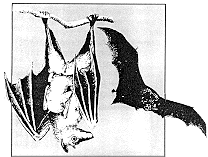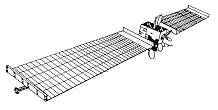
|
Feedback Form

ROAMER CONTROL:
INTRODUCING SENSORS
 Without
sensors robots are confined to living in their own world, 'blind' to everything
that goes on about them. Sensors change this. With sensors the Roamer
is able to react to its environment. The consequences may be very exciting.
Here, Marcus Topham continues his series of articles on the Roamer Control
features by introducing the world of sensors.
Without
sensors robots are confined to living in their own world, 'blind' to everything
that goes on about them. Sensors change this. With sensors the Roamer
is able to react to its environment. The consequences may be very exciting.
Here, Marcus Topham continues his series of articles on the Roamer Control
features by introducing the world of sensors.
Adding sensors to a robot may do little to change its appearance, but its ability to react to its environment demonstrates the radical difference between it and a senseless automaton. However, the powerful and subtle ideas involved make learning about sensors potentially a difficult task. This means that, before introducing Roamer sensors it is worthwhile spending a significant amount of time on preparatory work.
Human senses Discuss human senses.
What are they?
How do they work?
What can they sense?
 Bats have a radar sense that allows them to detect obstacles in the dark |
Sensors in the natural world Investigate how animals and plants sense. A comparison of human and animal sensors can prove very interesting. For example, in comparison with us, the mole is virtually blind; on the other hand a hawk can see a small mouse running through the grass from a height of 30 metres.
Sensors in robots and machines Sensors are used to tell us how
fast a car is going, or if it is about to run out of petrol or if handbrake
is on. We are surrounded by machines that use sensors. This provides an
excellent topic for a project.
Sensors in the car.
Sensors in the house.
Sensors in school. etc.
What do they sense?
Sensors need not be hi-tech. Some old shops still have bells on the door which sense when the door is opened and ring to alert the shop keeper. A project on old types of sensors incorporating a visit to an industrial museum can be worthwhile.

Satellite sensors are used to detect geological features
on the Earth's surface.
Sensor Games Below is an example of one of a number of simple sensor games presented in the Valiant Sensor Pack.
Blindfold one of the children who starts to walk across the classroom directed by a partner who gives them directions by clapping. A strategy must be agreed betwen them first; e.g. one clap, turn left 90°, two claps turn right 90°, etc.
These games are very useful for introducing children to something akin to a how Roamer perceives the world. They are also very revealing about the type of strategy the Roamer requires to perform various tasks.

SENSOR SYSTEMS
Switching on the light (stimulus) is detected by the sensor (eye) which transmits a signal along the Input Line (nerves) to the computer (brain). The computer interprets the signal and decides how to react. |
The Roamer mimics our sensor system: we carry on doing something until something else 'catches our attention'. This interrupt principle is how Roamer works: it will carry out a task until interrupted by a sensor. This is an important difference between the Roamer and many other educational sensor systems. Other systems require the computer to monitor constantly what is happening to the sensors. The advantage of the human like Roamer system is that it relates to the child's own experience.
| Back |
|---|